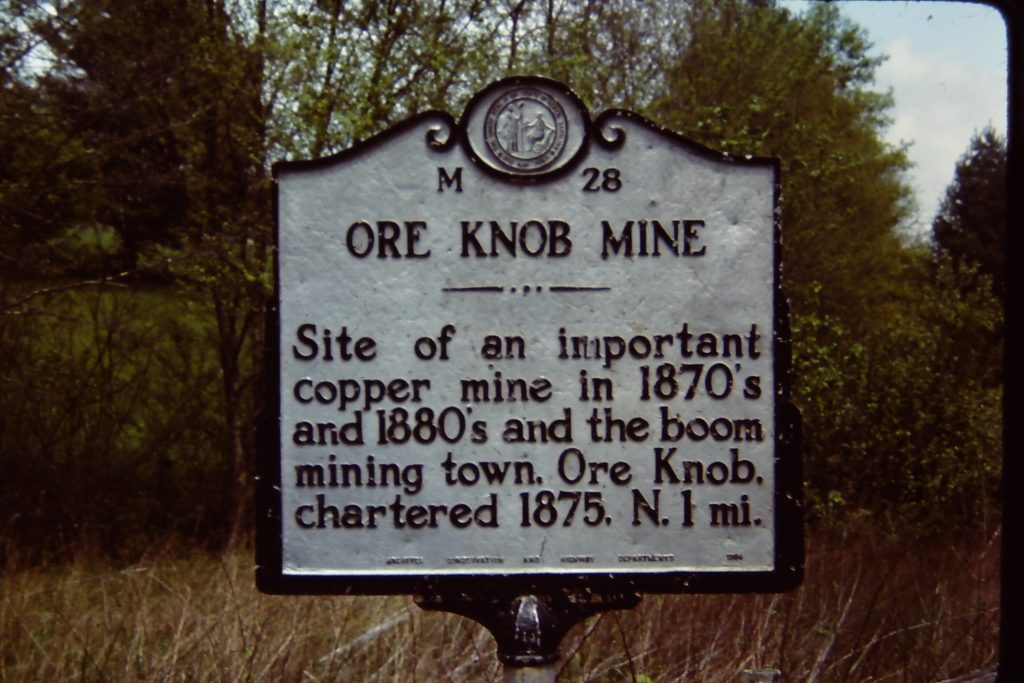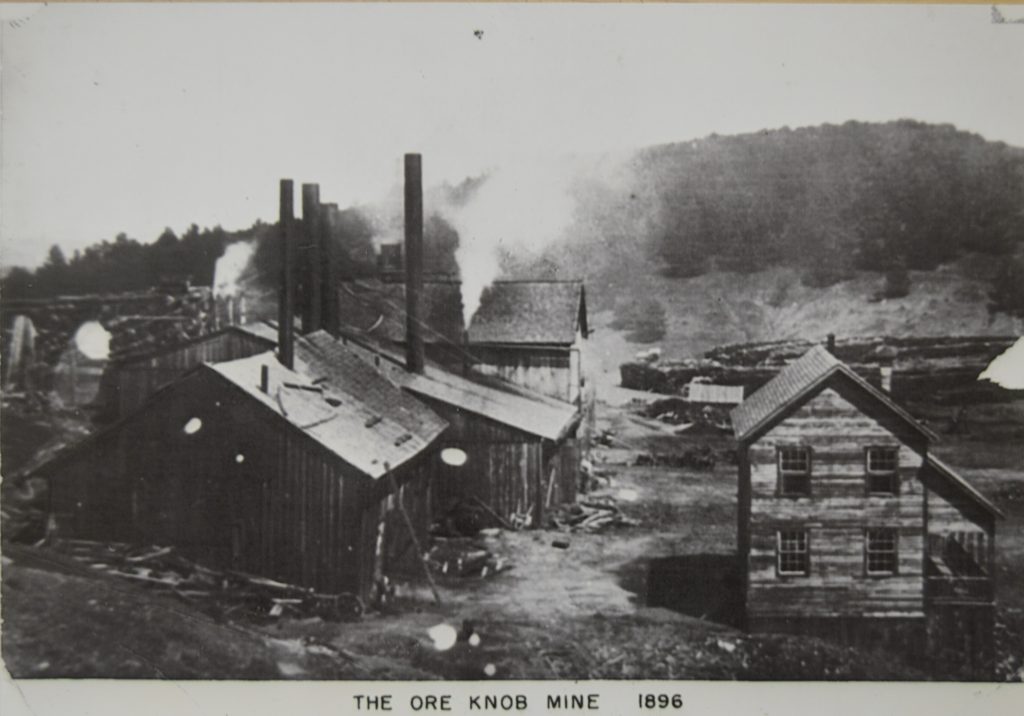Sometimes the most interesting insights into history can be gleaned from some of the most uninteresting sources. One perfect example of this is the 1880 census. Although it records nothing more than names, races, ages, places of birth and professions, it can provide a very nuanced insight into reality, if you know where to look.
In Ashe County, the 1880 census is notable because it captures the Ore Knob Copper mine at a peak moment. Because censuses are only conducted every 10 years, and the 1890 census has been lost to a fire, the 1880 census provides the only clear record of the Ore Knob community when it was at its most developed. Although this mine was one of the largest communities in Ashe County at the time, the census reveals that it existed in a very different world from the rest of the county.
For one thing, the community that developed around the copper mine was surprisingly populated. In 1880, the entire county of Ashe had a population of 14,447 people, approximately 28 people per square mile. However, the one mile square area around the Ore Knob mine recorded nearly 500 residents. These residents formed a well developed community that included a hall for dances, a church, an numerous stores. Four large steam engines, one of which was rated at 80 horsepower, powered the mine as well as a saw mill, a shingle machine, and a grist mill. Together, this booming community became a powerhouse of copper extraction. In fact, it was for a time, one of the largest copper mines operating in the United States. Millions of pounds of ore was extracted, sorted, and smelted through a variety of processes In 1879, the mine was reported as producing 90 tons of copper ore per day. This ore was transported in a nearly continuous stream by wagon to the nearest railroad hub in Marion, Virginia, where it was shipped all over the country, fueling the booming industrial output of the late 19th century.
Ore Knob essentially became a factory town, and formed a community that was significantly different than the rest of Ashe County. One thing that immediately becomes clear is the significant racial diversity that existed among these mine workers. In the decades immediately after the Civil War, Ashe County’s black population was notably higher than today. In 1880, there were 923 residents of Ashe recorded as ‘black’ or ‘mixed.’ That translates to a non-white population of around 6%. By contrast, the Ore Knob community records 169 non-white residents. That would mean that approximately 36% of all residents of the Ore Knob community were non-white. This is no doubt a result of the large migration of black workers across the south moving to areas that promised more employment. A similar shift occurred in Ashe County as black residents relocated to West Virginia in pursuit of jobs in the coal industry.
The pay at Ore Knob was by no means impressive. In 1878, according to newspaper accounts of the overall payroll, the average wage would have been around 95 cents per day. According to researchers who have compared the wages of miners from all of the United States, the average national mine wage during this time would have been $1.27.
The fact that Ore Knob was a community of transient workers can also be seen in the gender makeup of the area. Although one might expect a 50/50 split of men and women among a typical community, at Ore Knob the split was closer to 60/40 in favor of men. This disparity would indicate a population made up of many single men or married men living away from their family. The fact that the census records 85 boarders and only 65 heads of households further underscores this reality.

So where did all the workers come from? As might be expected, most, 73 percent, were from North Carolina. This is probably because most of the advertising for jobs at the mines were confined to North Carolina newspapers. In fact, if you consider bordering states, then almost the entirety of the Ore Knob community can be accounted for. 92% of the total population was born in either North Carolina, South Carolina, Tennessee, or Virginia.
One of the most interesting things to come out of the census is the notable representation of foreign born workers at Ore Knob. 24 residents were native of the British Isles, with 15 coming from England. In addition, many of those who claim birth in or around North Carolina were children of immigrants. Over forty residents of Ore Knob reported at least one parent born in England.
Ore Knob was a true boom town. For a few decades it was a dominant feature of the county, with more population and industry than almost anywhere else in the region. However, like with many boom towns, its transient population was connected not to the community, but rather to the opportunity it offered. As soon as copper mining lost its profitability, the entire community disappeared. Later attempts were made to reopen the mine; however, it was never again able to match its late 19th century status. Although the churches, stores, houses, and the mine itself have been essentially erased, the numbers recorded in the census reveal a very interesting portrait of the Ore Knob community at its height, a community of strivers seeking to find a better life in the quickly evolving world of the post Civil War South.

.
